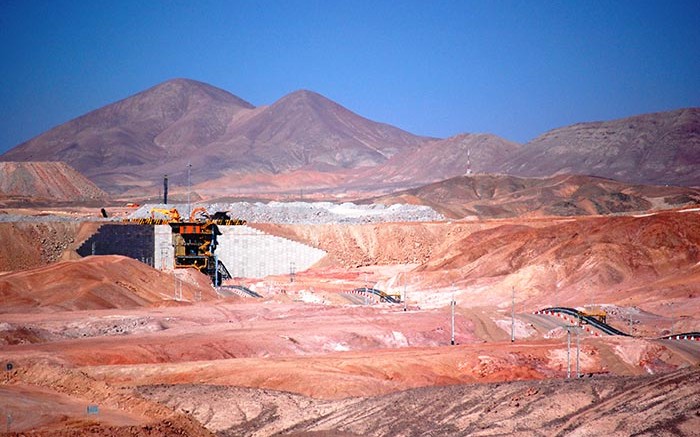VANCOUVER — Recent torrential rainfall in the Atacama desert in northern Chile has affected global copper markets. The prolific region hosts major mines, and the recent weather has triggered operational closures that have driven prices for the red metal toward a two-month high. In March the Chilean government declared a state of emergency in the region and charged its army with relief efforts and security.
The first domino to fall was Lundin Mining’s (TSX: LUN; US-OTC: LUNMF) Candelaria and Ojos del Salado mines, near the city of Copiapo. The producer announced on March 25 that it would suspend mining and milling activities after rainfall and flooding affected power and site access.
The Copiapo river and lower-lying valley communities saw heavy flooding in numerous locations, which closed provincial roads and disrupted access.
The company reported it had resumed operations on March 26, but Candelaria was still operating at half capacity. Lundin indicated that full production would return as soon as regional roads and site access were restored and crews could get to work.
The company expects Candelaria will produce between 130,000 and 135,000 tonnes copper in 2015, at cash costs of US$1.55 per lb.
Meanwhile, Chilean state-owned mining giant Codelco weathered a three-day shutdown at its Chuquicamata, Ministro Hales, Radomiro Tomic, Gabriela Mistral and Salvador mines. The company was already estimating a 5% year-on-year drop in copper production to 1.6 million tonnes, and the impacted operations account for 60% of its output.
On March 26 Codelco reported that it had restarted operations at its Distrito Norte mines, though the company’s Salvador operations in the Atacama region stayed closed due to unsafe operating conditions. The company stated that 17 workers stranded at the site remain safe.
Chile-based miner Antofagasta (LSE: ANTO) shuttered most of its operations. The company reported on March 26 that its Centinela, Antucoya and Michilla mines were temporarily suspended for safety reasons, although “some processing of stockpiled material” was possible. Antofagasta said that it had resumed “normal operations” on April 1.
The company’s forecast for 2015 production is pegged at 710,000 tonnes copper, 250,000 oz. gold and 8,000 tonnes molybdenum, with cash costs before by-product credits of US$1.75 per lb. Copper production estimates include 385,000 tonnes at Los Pelambres, 255,000 tonnes at Centinela, 30,000 tonnes at Michilla and 40,000 tonnes at Antucoya.
Anglo American’s (LSE: AAL; US-OTC: AAUKY) Mantoverde and Mantos Blancos mines were halted after a power failure. The company saw copper production at the operations fall 9% and 4% in 2014 due to lower grades. Anglo said its other Chilean operations — El Soldado and Los Bronces — were unaffected by the crisis. The company forsees between 720,000 and 750,000 tonnes copper in 2015.
The extreme weather has put an estimated 1.5 million tonnes of copper capacity on hold. Though only a fraction of global output for the red metal, this has helped bolster global prices. At press time copper bounced off a four-week low, and rose 10%, or US20¢, en route to a US$2.76 per lb. close.
The Chilean government says more than 40,000 people lost electricity, and even more had no drinking water. Flash-flooding has reportedly killed seven people, while 23 remain missing. Around 2,400 soldiers and police were mobilized to the region.


Be the first to comment on "Miners recover from heavy rainfall in the Atacama"